Robert Heggestad’s world of treasures in a city apartment
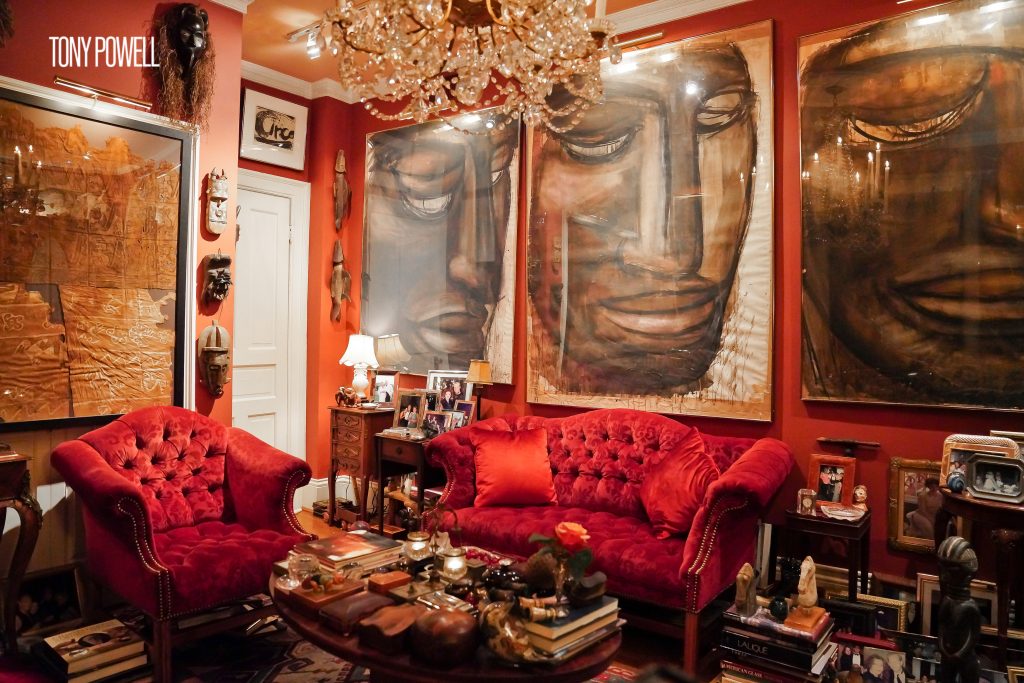
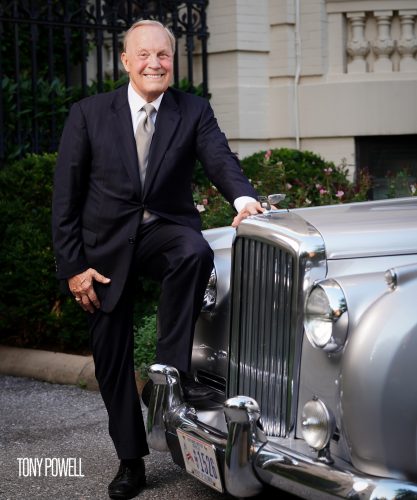
Art and antique collector Robert Heggestad outside his California Street NW apartment in Kalorama with his 1959 Bentley.
One of Robert Heggestad’s most prized antique possessions is a set of 24-inch Tang Dynasty horses purchased for a steal at auction. While the charm and distinction of the items are their stylized arched necks, pricked ears and heavy torsos, the story of their purchase is the real marvel.
Bidders had concluded that the horses were not authentic—based on a considerably lower than expected asking price. (Authentic pieces can range between $20,000 to $25,000 each.) No matter. Heggestad thought they were beautiful anyway and made the winning bid.
You can see his wide smile and cheeks beaming bright in a photo with the celebrated horses and his close friend, former Secretary of State Madeleine Albright.
Motivated by a hunch about their genuineness, Heggestad consulted David Sims, a prominent Chinese expert in antiquities and the former owner of Nonomura Studios on Connecticut Avenue NW, who confirmed that the horses were indeed authentic. With that, Heggestad’s lesson was cemented: “If something is beautiful, it shouldn’t matter if it is a reproduction as long as you are not paying ‘authentic’ prices,” he says. Yet in this case, he was rewarded with the best of both worlds.
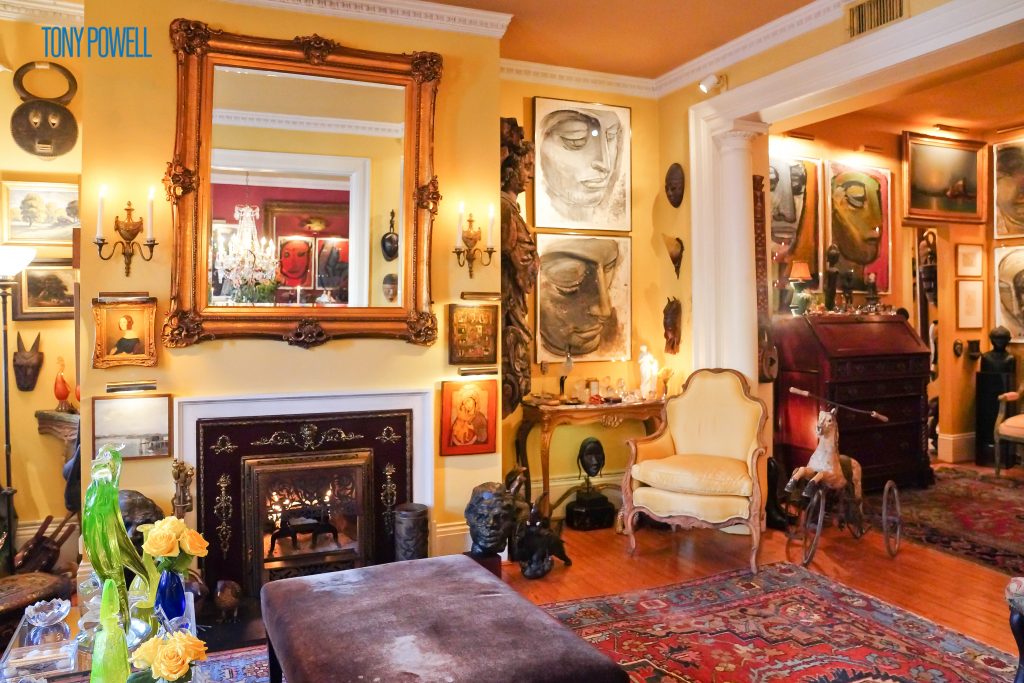
The Drawing Room: Next to the mirror is one of Heggestad’s favorite items: a 17th- to 18th- century carved wooden ship’s head figure. On the walls are a variety of 18th- to 20th-century French, Italian and British paintings and drawings. Heggestad is particularly fond of small European portraits painted with water colors on ivory.
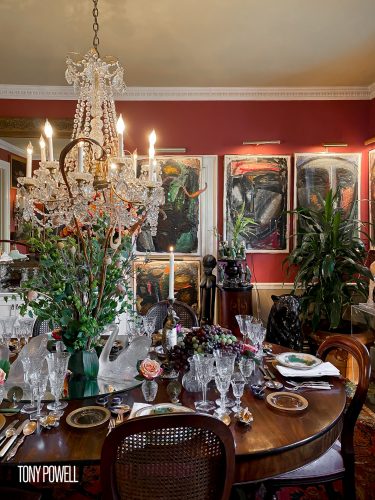
The Dining Room: A Baccarat chandelier hangs above the table, which is set with Lalique swans. Around the table are 19th-century French chairs.
Heggestad’s world, tucked in his Kalorama apartment on California Street NW, abounds with beautiful display-worthy items beyond the Tang Dynasty horses that now grace his dining room: a late 18th- to early 19th-century Baccarat candle chandelier; a carved wooden ship’s figure head that weighs several hundred pounds; stenciled hand-painted pre-Colombian fabrics that date between 200-300 B.C. purchased at an auction of relics from the estate of an American diplomat in South America; and 15th-century Sicilian puppets he describes as “dramatic and interesting.”
Most famously, Heggestad lent his rosewood cabinet, which he found at a small antique shop in Arlington, Va., to the American Museum of Natural History. Turns out the cabinet once contained 1,700 specimens that had belonged to famed British naturalist Alfred Russel Wallace, who had the idea of natural selection independently of Charles Darwin.
Not every piece can be a “national treasure,” as a Natural History museum curator once deemed the cabinet, but that doesn’t seem to matter to Heggestad. Each antique purchase, he says, is a moment of “true exhilaration” after wading through items at the Georgetown Flea Market on Sundays and Christ Child Opportunity Shop in Georgetown. (He’s also fond of Weschler’s Auction House and Christie’s.) He’s filled two large storage units with art, rugs and furniture and breakage doesn’t seem to affect him. “Nice things such as china and glasses should be used,” he maintains, “even if they occasionally get broken.”
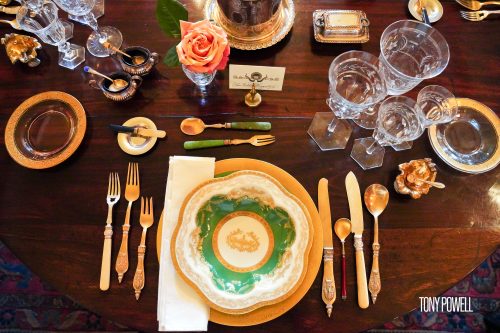
The dining table is set with Baccarat crystal glasses and vintage Black Knight china soup bowls in hand-painted pattern by Hohenberg Bavaria, circa 1925-1941.
For someone who adores exquisite artifacts, there is one “worthless treasure” he considers irreplaceable … a sea rock found and sculpted by his friend Olga Hirshhorn that strikes one as resembling a three-legged dog urinating. Hirshhorn, the widow of Hirshhorn Museum and Sculpture Garden benefactor Joseph Hirshhorn, and who Heggestad describes as “the most important influence affecting my passion for collecting,” died in 2015. While the “Dog Peeing” sculpture, as it is so naturally named, has no monetary value, it is prominently displayed he says, “as a treasured remembrance of a wonderful friend.” It is true then that dear old friends, past or present, are the most valuable antiques of all.
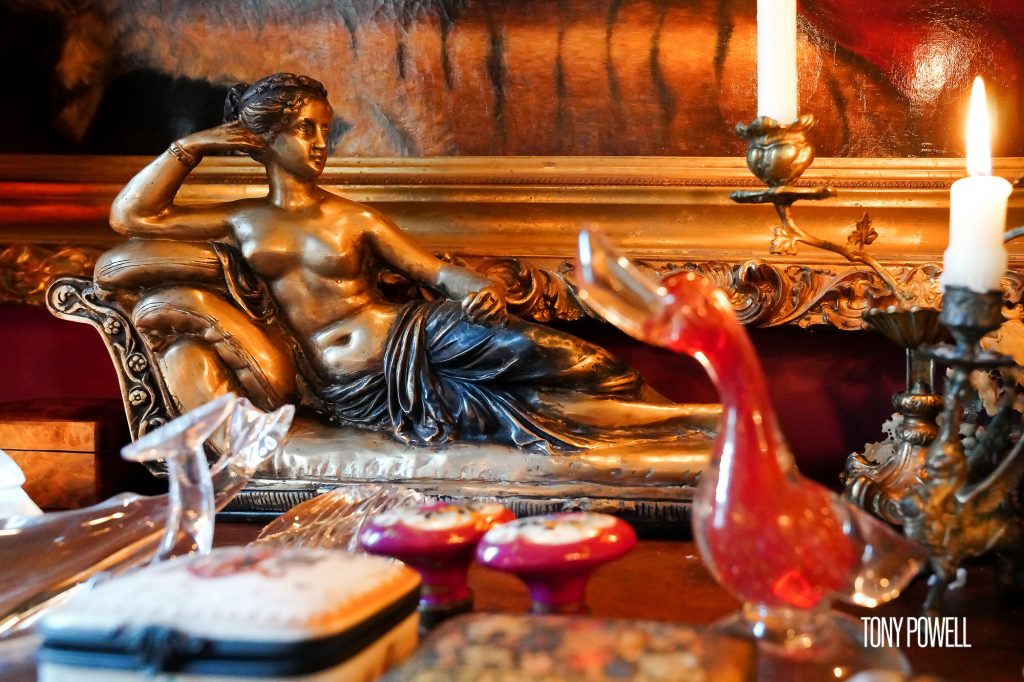
A vintage French reclining nude bronze and Murano bird are seated together. Overall, Heggestad’s theory on design is simple: “when you find a beautiful object, it generally will look good anywhere.”




